FINESSE
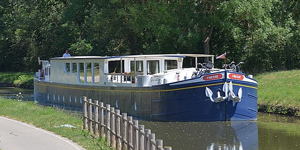
Southern Burgundy: River Saône and Canal du Centre
Up to 8 guests
Charters and Cabin cruises
Themed Cruises:
Bike, Family, Golf, Wine

Learn about places to visit in the towns and villages near and along the Canal du Centre, a French canal located in Southern Burgundy between the Saône and the Loire. The Canal du Centre constituted the final link in the first inland-waterway route between the English Channel and the Mediterranean Sea.
On the edge of the forests of Morvan lies Autun, an ancient Roman town and today an important religious center. Autun was founded by the Roman Emperor Augustus, after whom it was named. Several elements of Roman architecture including walls, gates and an amphitheater can still be seen.
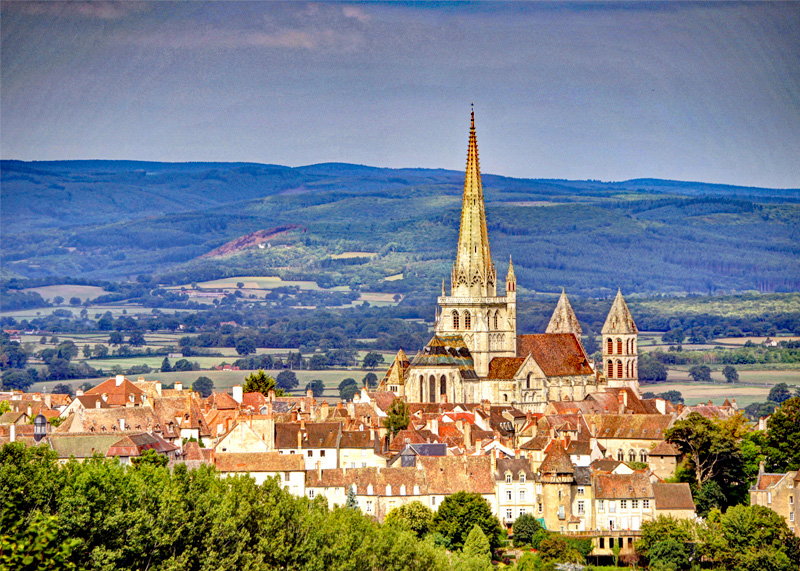
Cathédrale Saint-Lazare d'Autun
In the early 12th century, work started on building the Cathédrale Saint-Lazare d'Autun and work advanced quickly enough for it to be consecrated in 1130. The inspiration of the new building, both in layout and decoration, was the Cluniac reform movement and the designs were influenced by the Cluniac abbey of Paray-le-Monial. The cathedral houses the relics of the saint and was an important pilgrimage in the Middle Ages. Due to social practices that involved pilgrims venerating the relics of saints in this period, the Bishop of Autun ordered the creation of a larger cathedral to house the relics and accommodate the influx of pilgrims into Autun. The column capitals and main façade of the church are embellished with realistic sculptures carved by Gislebertus. The artwork was a means of teaching Christian ethics to the masses with dramatic scenes of heaven and hell.
The cathedral is a masterpiece of Romanesque art, due in large part to the spectacular capitals sculpted by Gislebertus in its nave and choir. He created capitals that used the tendrils of the Corinthian capital to create an architectural frame for the narration of stories. Each capital depicts a different scene, such as the Three Magi or The Flight into Egypt.
In the middle of the Côte d'Or, Beaune is known as the capital of the wine region. It is one of the wine communes of the Côte de Beaune subregion of the Burgundy wine region. Although Beaune is lacking a Grand Cru vineyard within the commune, it is the hub of the region's wine business, as most of Burgundy's major négociants are located here.
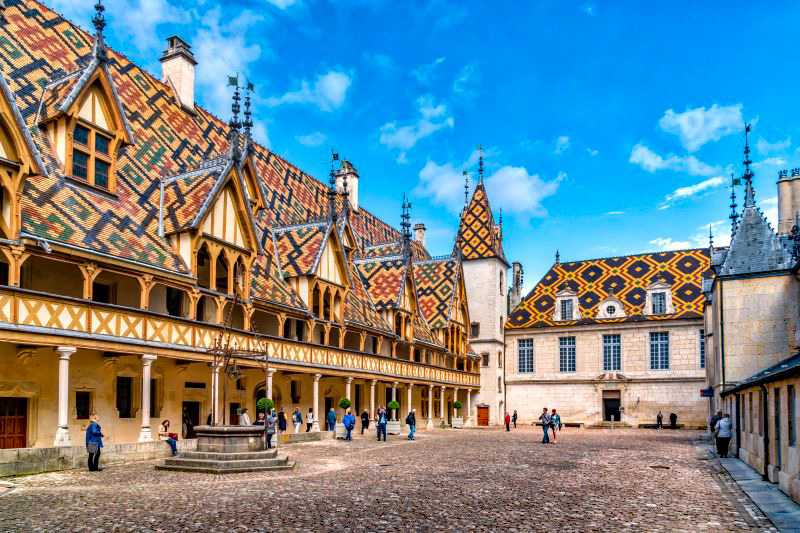
Beaune
Beaune is one of the best preserved medieval cities in France. It is a walled city with about half of the battlements, ramparts, and the moat, remaining in good condition. Landmarks include the Halles, the Hospices, the Beffroi, and Notre Dame.
The town is also famous for its Baroque Music Festival every weekend throughout July, the Festival Cours Eau Jardins throughout the summer, the Jazz Festival in September, the Hospice de Beaune Wine Auction in November, and the colorful Festival of Saint-Vincent, the patron saint of wine, each January.
The Hospices de Beaune or Hôtel-Dieu de Beaune is a charitable institution in Beaune, France. The original hospital building, the Hôtel-Dieu, one of the finest examples of French fifteenth-century architecture, is now a museum.
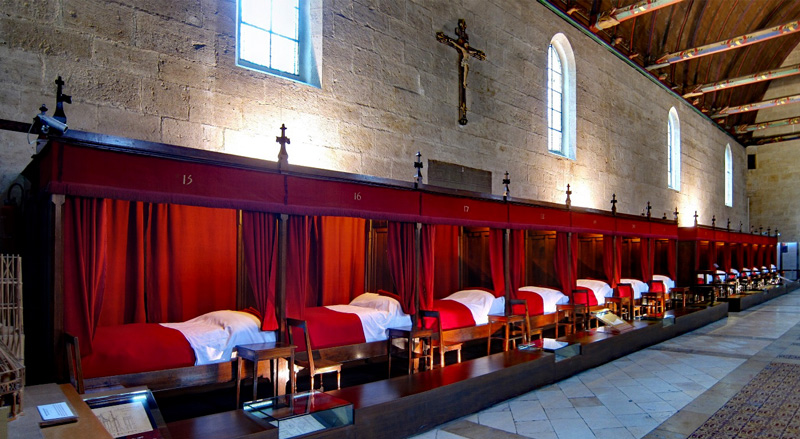
Hospices de Beaune / Hôtel-Dieu de Beaune
The Hôtel-Dieu was founded in 1443 by Nicholas Rolin, the Chancellor to the Duke Philippe-le-Bon (Philip the Good) who was the ruler of Burgundy at that time. The Hundred Years War had recently been brought to a close by the signing of the Treaty of Arras but massacres continued with marauding bands (écorcheurs) still roaming the countryside, pillaging and destroying, provoking misery and famine. The majority of the people of Beaune were declared destitute. Nicolas Rolin and his wife, Guigone de Salins, reacted by deciding to create a hospital and refuge for the poor giving it an annual income and its own resources, vines and salt works.
Cluny developed around the Benedictine Abbey, founded by Duke William I of Aquitaine in 910. The height of Cluniac influence was from the second half of the 10th century to the early 12th. During its earliest years the abbey held the title of the world’s largest church until the construction of St. Peter’s Basilica began in Rome. The abbey was sacked by the Huguenots in 1562, with many of its valuable manuscripts destroyed or removed. It was further destroyed in 1790 during the French Revolution, and very little of the Abbey survives to this day.
Chalon-sur-Saône, lies in the south of the Burgundy region of France with a population of 48,000 in 2006. It was built alongside the river Saône about 3000 years ago. During ancient times the town was a naval base, during the Middle Ages it was a large fairgrounds, and in modern times a trading center. It is an important port at the confluence of the River Saône and the Canal du Centre. This once busy port, was a distribution point for local wines.
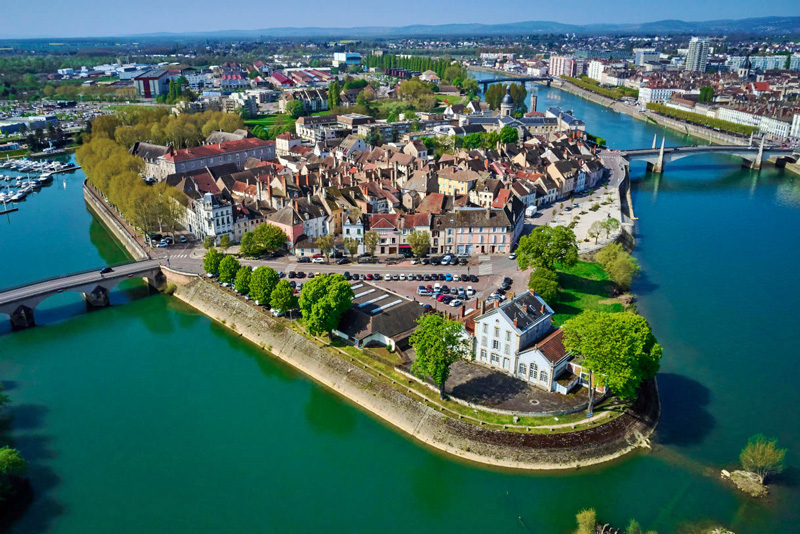
Chalon-Sur-Saône
Chalon is known as the birthplace of photography. Its most famous resident, Nicéphore Niépce (1765-1833), was a French inventor and one of the earliest pioneers of photography. Among his inventions was the Pyréolophore, one of the world's first internal combustion engines, which he conceived, created, and developed with his older brother Claude. There is a museum in the town that contains more than two million photographs and many artefacts such as cameras and other photographic equipment. Another famous resident of Chalon-sur-Saône is Dominique Vivant Denon (1747-1825) who was involved in the creation of the Louvre museum in Paris, converting the former royal palace into a museum after the French Revolution.
In the late 19th century, copper and iron works were the town's main industry. The large engineering works of Petit-Creusot, a branch of those of Le Creusot, manufactured heavy industrial items.
Every year in July, Chalon-sur-Saône hosts a 4-day international street artists festival, called Chalon dans la Rue (Chalon in the Street). Artists from across Europe and beyond come to the streets of Chalon to perform music, theater, acrobatics, comedy, etc.
The Château de Cormatin, located between the two prestigious abbeys of Tournus and Cluny, was built by the Marquises of Huxelles at the beginning of the 17th century as an impressive symbol of their power and prestige. Devised around 1620 and revamped in the "English" style in 1785, the gardens had all but disappeared by 1815 when its soil was used to fill the moat. Some beautiful trees survived including a three hundred year old oak, seven swamp cypresses, and the 130 lime trees in the Lamartine avenue beside the river.
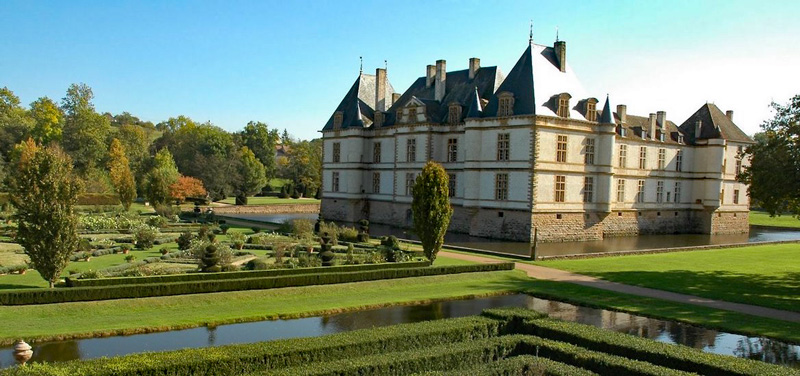
Château de Cormatin
During the French Revolution in 1789, the incumbent owner Pierre Dezoteux (also aide-de-camp to Rochambeau during the American Revolutionary War) was able to calm rioters who planned to burn the castle, by rolling out all the barrels from the wine cellars for them.
Long abandoned, a full restoration of the Château de Cormatin was initiated in 1980 preserving many original features. Between 1988 and 1989 the re-excavation of the moat allowed the recreation of the gardens in their original Baroque style and they are today listed amongst the finest in France. Its magnificence is particularly thanks to the lavish decoration in the apartments: painted, sculpted and gilded from floor to ceiling. This is the most all-round, well-preserved example of decorative art from the time of Marie de Médicis.
Château de Cormatin — 2-minute video
The monumental Château de Cormatin is surrounded by wide moats and set in beautiful gardens dotted with ponds. Plant maze, sylvan theatre, and ponds are spread over more than 10 hectares. The garden stretches out before your eyes and resembles a Renaissance-style park. It is a perfect example of the gardens and is now listed among the most beautiful parks and gardens of France.
Not far from Beaune and Chalon-sur-Saône, the Château de Germolles is the best preserved residence of the Dukes of Burgundy.
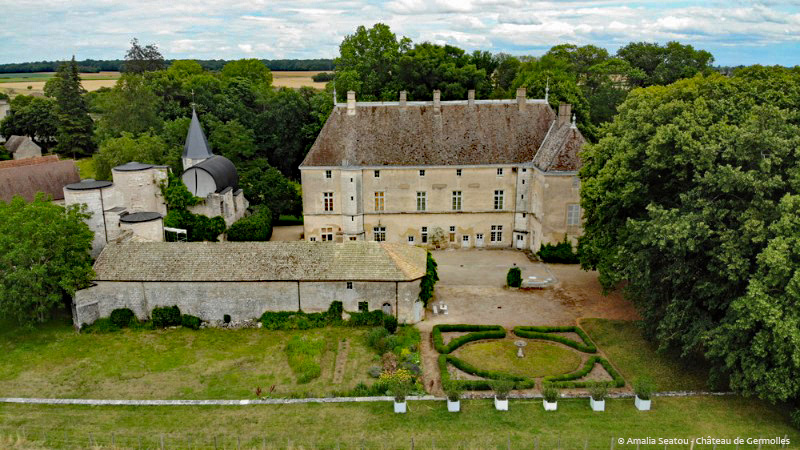
Château de Germolles
The Château de Germolles, palace of the Dukes of Burgundy, is located in the commune of Mellecey, 10km from Chalon-sur-Saône. Philip the Bold (Philippe le Hardi), Duke of Burgundy, bought the stronghold of Germolles for his wife Margaret of Flanders (Marguerite de Flandre) in 1380. The Duchess transformed it into a luxurious home with the help of the finest sculptors and artists of the Burgundian School (Claus Sluter, Jean de Beaumetz).
The tour includes the cellar, the lower chapel, the two towers guarding the entrance (the remains of the original fortress), the great reception room (salle d'honneur),the ducal chapel and apartments, as well as those of the court. The painted and sculptured décors, including the floor tiles, testify to the standing of the château. The hamlet adjoining the château and a 19th century park set out in the English style embellish the setting.
This château has great historical significance and furthermore, is a rare example of a well-preserved residence dating from the 14th and the early 15th centuries. This exceptional building still evokes court life in France on the eve of the Renaissance. It has been listed as a monument historique since 1989.
Since its founding in 1720, Maison Champy has been producing award-winning wines. Maison Champy makes both white and red wines, of which the most prestigious is Grand Cru.
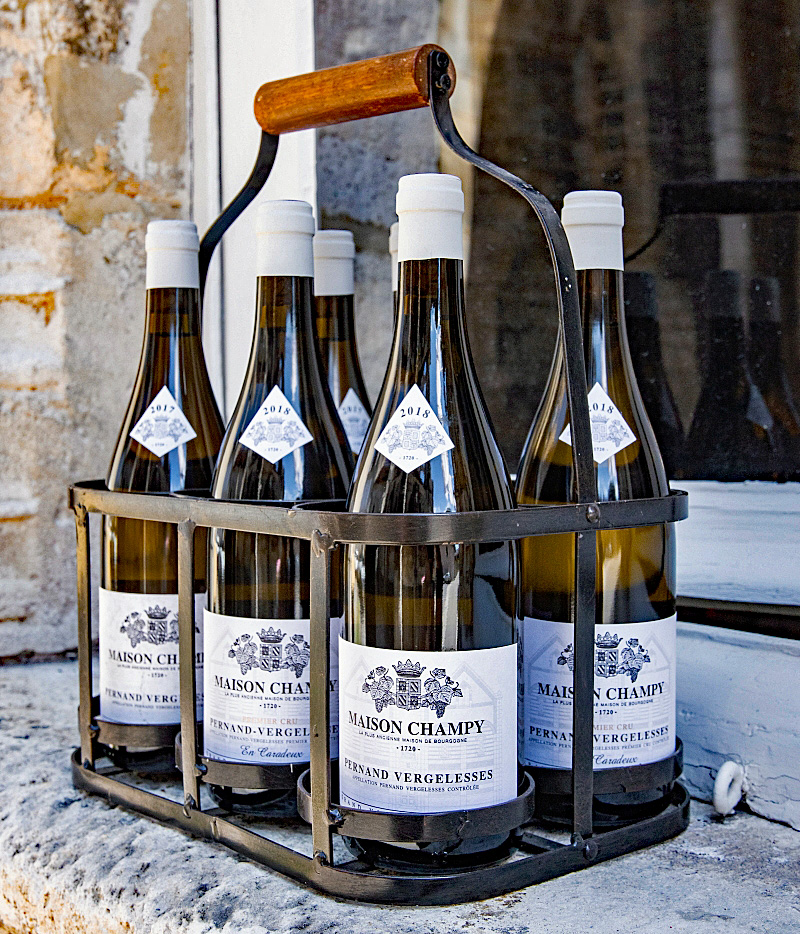
Maison Champy
A speciality of this experienced wine-maker is Pernand-Vergelesses premier crus, known for its intense ruby color. Harvesting is organic to preserve and highlight the true character of the unique terrain where the grapes are grown.
Read more about Maison Champy HERE.
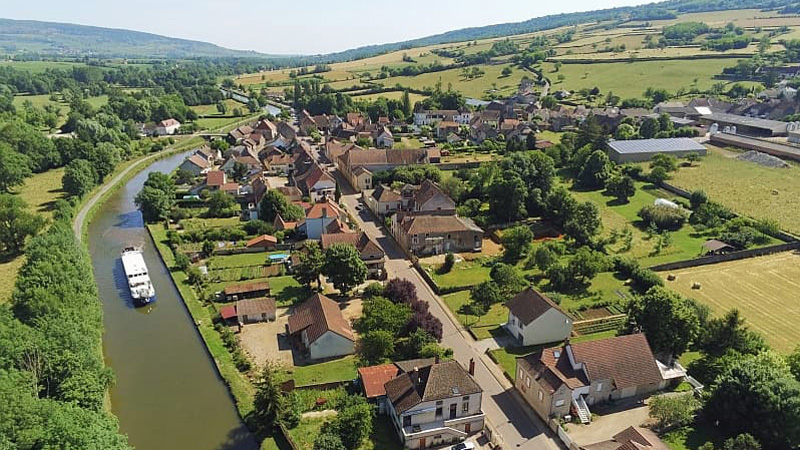
Enjoy the Canal du Centre on a barge cruise aboard Finesse

Southern Burgundy: River Saône and Canal du Centre
Up to 8 guests
Charters and Cabin cruises
Themed Cruises:
Bike, Family, Golf, Wine